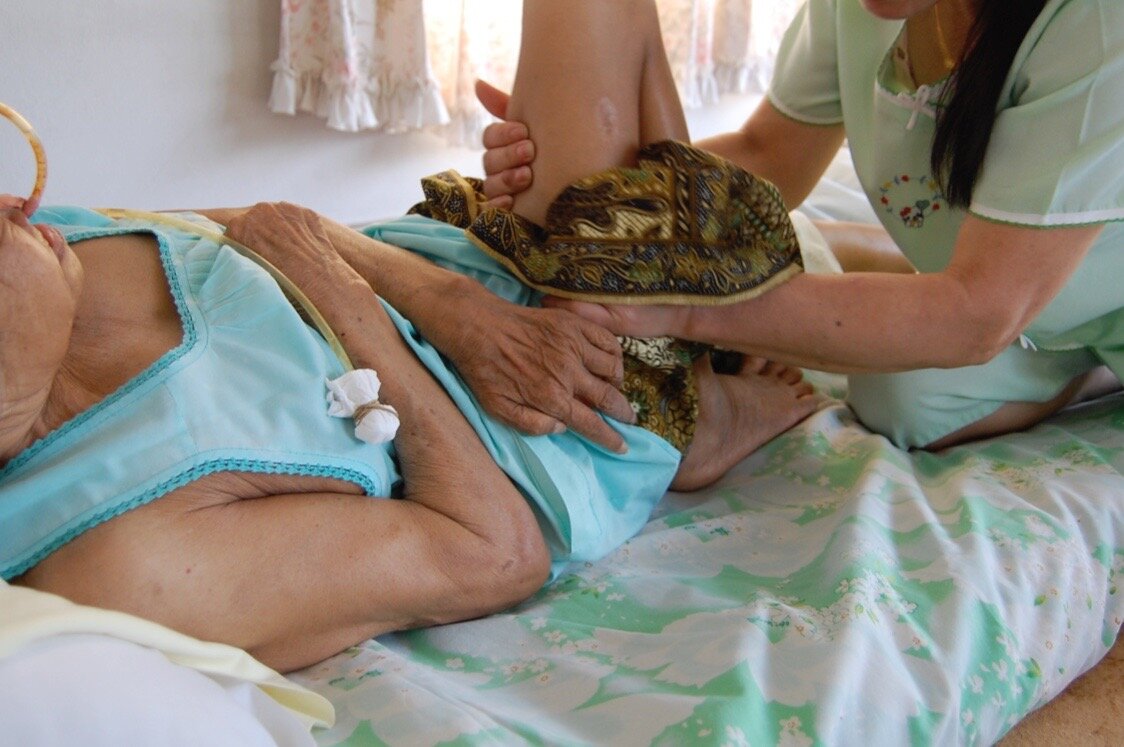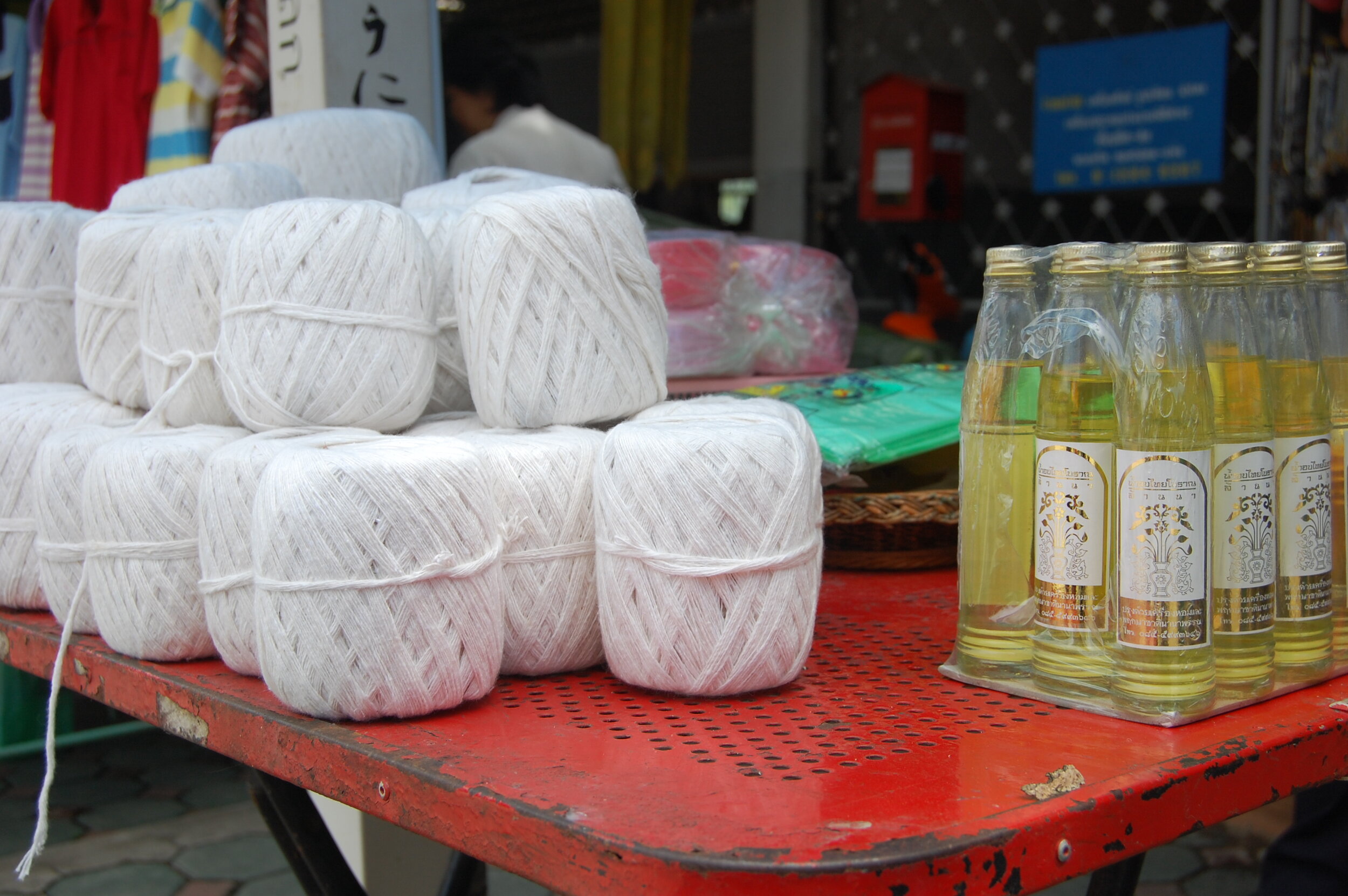Spectres of Obligation: Care Across Realms in Northern Thailand
Abstract
Goosebumps. A dream of a departed loved one or a long-lost friend. A sudden urge for beer. A glimpse of a figure. The pulsing beat of a drum bringing one to dance. People in Northern Thailand report and circulate a wide range of signals from the otherwise unseen. Amidst any fears or repulsions these encounters may provoke, a sense of obligation is pronounced. With a spontaneous chant or a trip to a temple to make merit, people often move on behalf of those who do not have the body to do so. What might come of considering relations with spirits in terms of care? Care has emerged in recent years as a generative site of ethnographic inquiry and anthropological theorizing, imbued with moral, political, psychological, and practical significance. This photo essay contributes to this arena by probing what attuned perceptions and trained responses to Thai spirits, ghosts, and ancestors can reveal about care and the force of felt obligation.
… Perhaps the ways people show up and do for both the seen and the unseen can serve to de-emphasize the usual alignment of action and understanding, and even de-center individual intention, in favor of more diffuse logics of mind, self, and ethical being at the heart of such care and its innovations …
Citation: Aulino, Felicity. “Spectres of Obligation: Care Across Realms in Northern Thailand.” The Jugaad Project, 14 Jun. 2020, thejugaadproject.pub/spectres-of-obligation-care-across-realms-in-northern-thailand [date of access]
Image 1: Hair Wash, Chiang Mai, Thailand, 2009. Photo by author.
Is care universal? Or are there particular emotional and practical ways of being that can be differentiated as care in different contexts?
In order to explore such a question ethnographically, I have defined care simply as “providing for others.” To understand care then, it is crucial to understand what counts, and for whom, in contexts in which providing for others is often habituated in daily routines and naturalized in habit.
So how can one attune to what needs to be done and who stands out as deserving?
Image 2: Daily Routine, Chiang Mai, Thailand, 2008. Photo by author.
Before care is naturalized, one learns what is important, what is needed to be done.
With a new diagnosis, or a new physical ailment, the landscape of the body changes; and yet, what stands out as important, and what is to be done in response, soon becomes habituated, rote, routine.
Image 3: Grinding Meds, Chiang Mai, Thailand, 2008. Photo by author.
The habituation is what makes “care” expert. Once something is repeated often enough, it is naturalized in perception as self-evident. This has ramifications for the exploration of care, both in terms of witnessing what caregivers do as care, as well as what outside observers assume counts.
Sick persons’ bedsides and medical arenas seem to call out as primary examples of care spaces. And yet, care is evident in other realms as well – from the preparation of special events to the circulation of dishes at a simple meal.
Image 4: Entrance. Chiang Mai, Thailand, 2008. Photo by author.
How do people provide for others?
Image 5: Longevity Ceremony (สืบชาตา, Seup Chadta) at Suan Dok Temple, Chiang Mai, Thailand, 2008. Photo by author.
What is done? What is emphasized?
Image 6: Praying for Longevity, Chiang Mai, Thailand, 2008. Photo by author.
How do people come to perceive, and to feel obligation to, others?
Image 7: Sai Sin (สายสิญจน์), Blessed String, Chiang Mai, Thailand, 2008. This string is tied between the Buddha statues and across all the people in attendance, a vehicle for the transfer of merit. Photo by author.
What counts as important?
Image 8: String and Oil, Chiang Mai, Thailand, 2008. These are objects that are utilized in ceremonies, like the “longevity” ceremony depicted above, mobilized with the sacred capacity to transfer merit. People will also grasp the elbow of others, forming a chain of connection from the pourer of sacred waters or other ritual acts, allowing the merit to transfer between participants. Photo by author.
What responses are encouraged, supported, made common sense in context?
Image 9: Evening Roadside Dining. Bangkok, Thailand, 2009. Photo by author.
Gina told me how, when she was 18, she encountered a spirit late one night: it appeared as a man, pale, with no shirt on, sitting all wet by the side of the road and eating noodles, scooping them up with its hands. It was frightening, yes – but not translucent or flickering, like some ephemeral vision of 19th century spirit photography. It was clear and present, as real as flesh and bone; yet she knew it was a spirit, without a body walking the earth as her own.
Some things can be known otherwise, whether seen or unseen, confirmed by sensations – like the goosebumps Gina got then, or by smells, sounds, a feeling, the flash of laser-like lights.
Image 10: Making Merit. Lamphun, Thailand, 2008. Photo by author.
More than the strong desire for confirmation, Gina felt obligation. She woke early the next morning and headed to a temple, thinking of this guy as she made merit on his behalf.
Image 11: Offerings. Wat Umong, Chiang Mai, Thailand, 2017. Photo by author.
I spent most of 2017 talking with people in Northern Thailand about their encounters with spirits and other extra-ordinary events they deemed spiritual or religious. Nearly all the Buddhists described a similar response to such experiences, involving: the need to “make merit” or present offerings at a Buddhist temple soon thereafter, and also often a kind of knee jerk recitation in the moment of a common Pali chant, pae metta (แผ่เมตตา), for spreading kindness or goodwill.
Image 12: On the Road. Chiang Dao, Thailand, 2017. Photo by author. Spirit shrines line a patch of road along a mountainside pocked with sacred caves.
Talking about spirits, a woman named Nok says, “getting goosebumps is normal…”
She goes on, “There are really many of them on the road, say, people who die in an accident but still have nowhere to go… Many spirits are on the road. Or in the hospital…”
Image 13: Abandoned? Bangkok, Thailand, 2008. Photo by author.
“In the past, if I walked near [this particular place near where she lived], I would get goosebumps, I could sense it. I would pae metta (แผ่เมตตา) right away.”
Perception in such contexts comes with conditioned obligation – more than an imperative to prove what is real.
Another woman reports a strong urge for a beer as a spiritual experience. She normally doesn’t drink beer, says she doesn’t ordinarily like or want it. She says spirits can send feelings, including strong desires for tastes or actions.
As many explain, humans are incarnate, they are able to provide in ways inaccessible to spirits without material form. But not always. It depends.
Obligations are intertwined with perceptions here. If you feel it, you are obliged to act in response. But what’s more, what you perceive depends on who you are and where you are.
Image 14: Spirit House. Chiang Mai, Thailand, 2008. Photo by author. This shrine is situated and tended to along the side of the main road of an urban “slum” outside the main municipal area.
To provide for others, you must know what counts, for whom, in context. In this way, notions of “the self” cannot be taken for granted in explorations of care. What if, for instance, a given self is not generally understood as a solid entity?
Another road, a different spirit; but a different person, perhaps no encounter.
Perception in this way is not so much mapped onto a single empirical reality that appears the same to all observers, but rather perception itself is contingent on a whole host of factors, including the karmic coordinates of the perceiver – their openness, their debts left to settle.
Image 15: Day of the Dead (สลากภัต). Lamphun, Thailand, 2008. Photo by author.
There is a choice to care… but perhaps it is not exactly one’s own.
What (or whom) obligates one to act?
A cultivated commitment to another?
Image 16: Spirit Medium’s Shrine. Chiang Mai, Thailand, 2017. Photo by author.
What (or whom) obligates one to act?
A desire one cannot resist?
The beat of a drum?
* (like the “dance compulsion” symptom of spirit mediumship Visisya Pinthongvijayakul recently wrote about in American Anthropologist (2019 121(1)).
Image 17: Shrine Skull. Chiang Mai, Thailand, 2017. Photo by author.
Who or what appears before you now matters, is already somehow conditioned, and also makes you up. Being in a body, you can provide for others: “caring” sometimes by your own initiation, and sometimes not.
Image 18: Offerings. Lampang, Thailand, 2017. Photo by Sangwan Palee.
I am suggesting that people’s dealings with the spirit world can be productively thought of in terms of care and negotiation, and in turn, care scholars can look to such encounters for a powerful intervention into common renderings of care.
What any given individual can perceive depends on a host of personal, social, and environmental factors. Social worlds train responses to such perception, and such training is naturalized into a felt force of obligation. Compulsions, feelings, desires – these too can be attended to as the perceptions of another, compelling one’s care. What responses to spirits in Thailand show is how robust ritual technologies and patterned actions can and are called upon when one finds oneself perceiving the needs of others – material or immaterial.
For care across a variety of realms then, rather than making things too solid (so to speak) with notions of universal care ideals and meaning-filled intentions, perhaps we have to think more with ghosts – allowing scholars to see care in habituated actions, sometimes beyond that which is understood.
So too then for innovation. As Brahinsky (2018, Anthropological Theory) notes, “What comprises a more powerful agent for change: a singular moment, or a deeply sedimented sensibility or habit?” Indeed, that’s what has made innovation so dangerous: at root, it is the disruption of the habits that continually re-substantiate our social structures. Rituals of care need not provide a framework for understanding how things really are; rather, they can reveal mechanisms for making things so.
























